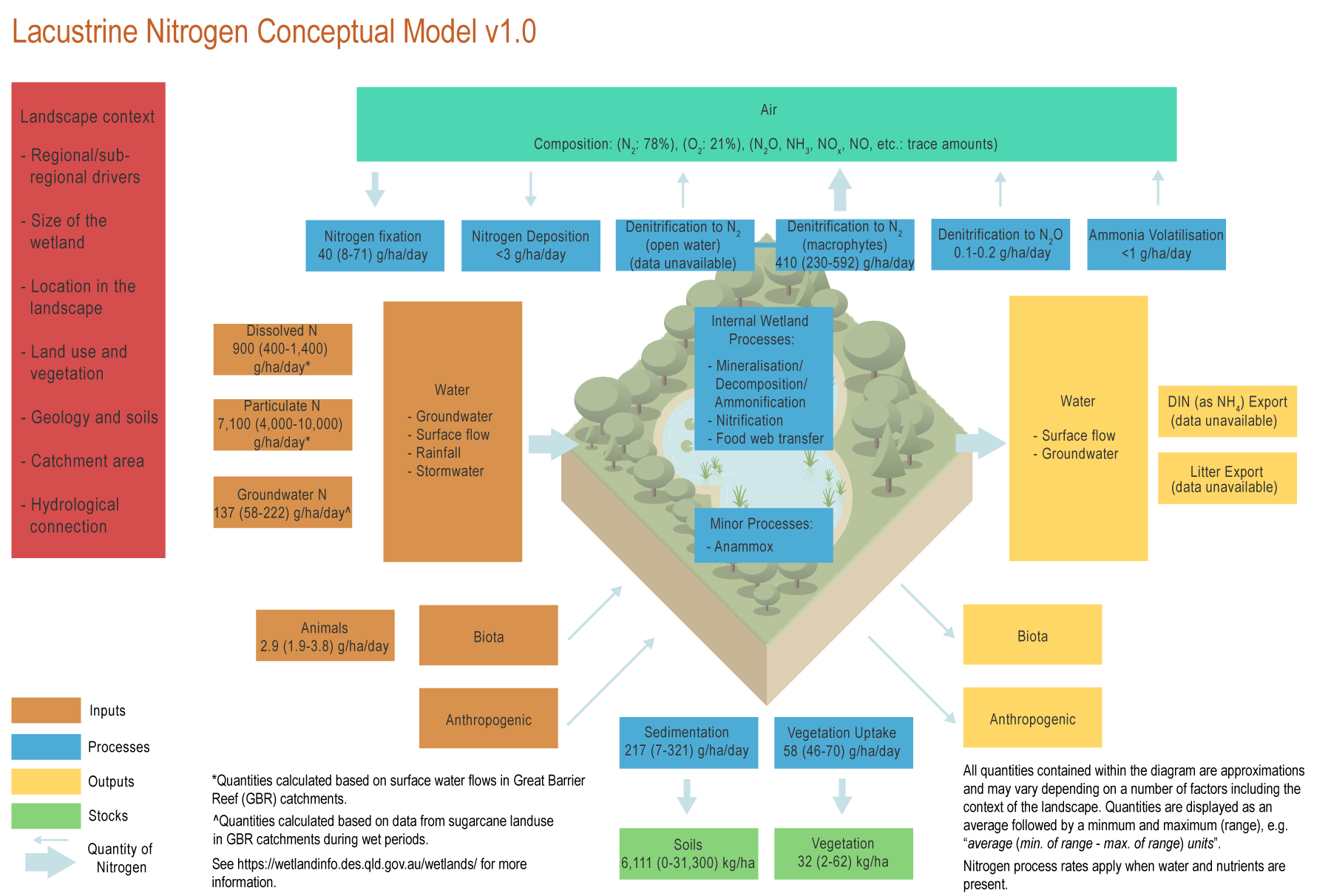|
|
LacustrineLacustrine – Stocks
The conceptual models were compiled by researchers in collaboration with a wide range of stakeholders from Natural Resource Management groups, universities and government agencies and based on available scientific information[2]. Click on elements of the model or select from the tabs below Nitrogen (N) stocks in lacustrine wetlands (lakes) are relatively low to intermediate, and are mostly concentrated at the edges of the lake, where macrophytes are present or in the form of floating macrophytes, which can form very dense clusters, or stored as sediment in the bottom of the lake. Nitrogen can be stored in phytoplankton but this is highly variable depending on the trophic status of the lake. Soils and sedimentsThe N stock in lakes is primarily in the sediments at the bottom of the lake and has been reported at approximately 6,111 (0-31,300) kg/ha*[4]. VegetationMacrophytes can account for a significant N stock in vegetated portions of the lake (32 (2-62) kg/ha)*[1], especially in lakes that contain weeds where they can have up to 288 kgN/ha[2]. The biofilm on top of the macrophytes can account for about 2% of the total N stock[2]. The N stocks in lakes however, are highly variable, as they can be flushed out of the system, or die and decompose in the bottom of the lake, so they can only be considered a short-term N sink. Trees surrounding the lake will provide long-term storage, but most of the vegetation storage of nitrogen will be at the edges of the lake, in the shallower parts. BiotaLakes are likely to have variable stocks of N, in part, due to the mobility of fauna, including crocodiles (in north Queensland), turtles, fish and birds, which store nitrogen in their tissues. WaterDissolved N in the water column is rapidly taken up and processed by microbes (a microbial loop) and doesn't form a long-term stock. See vegetation above[3]. *Nitrogen quantities are displayed as an average followed by a minimum and maximum (range), e.g. “average (min. of range - max. of range) units”. References
Last updated: 2 August 2021 This page should be cited as: Department of Environment, Science and Innovation, Queensland (2021) Lacustrine – Stocks, WetlandInfo website, accessed 8 May 2025. Available at: https://wetlandinfo.des.qld.gov.au/wetlands/ecology/processes-systems/nitrogen-concept-model/lacustrine/stocks.html |

 — Department of the Environment, Tourism, Science and Innovation
— Department of the Environment, Tourism, Science and Innovation

